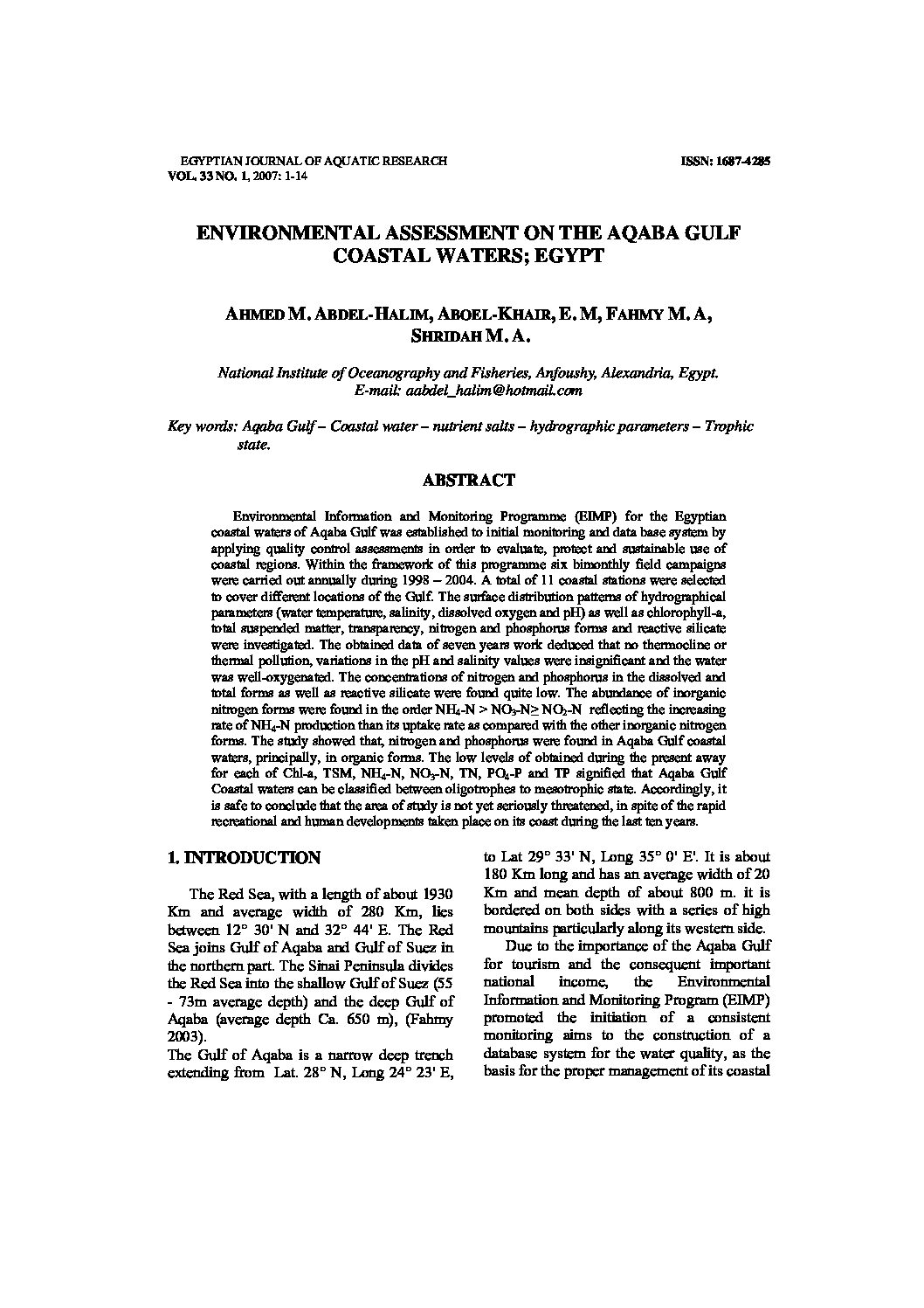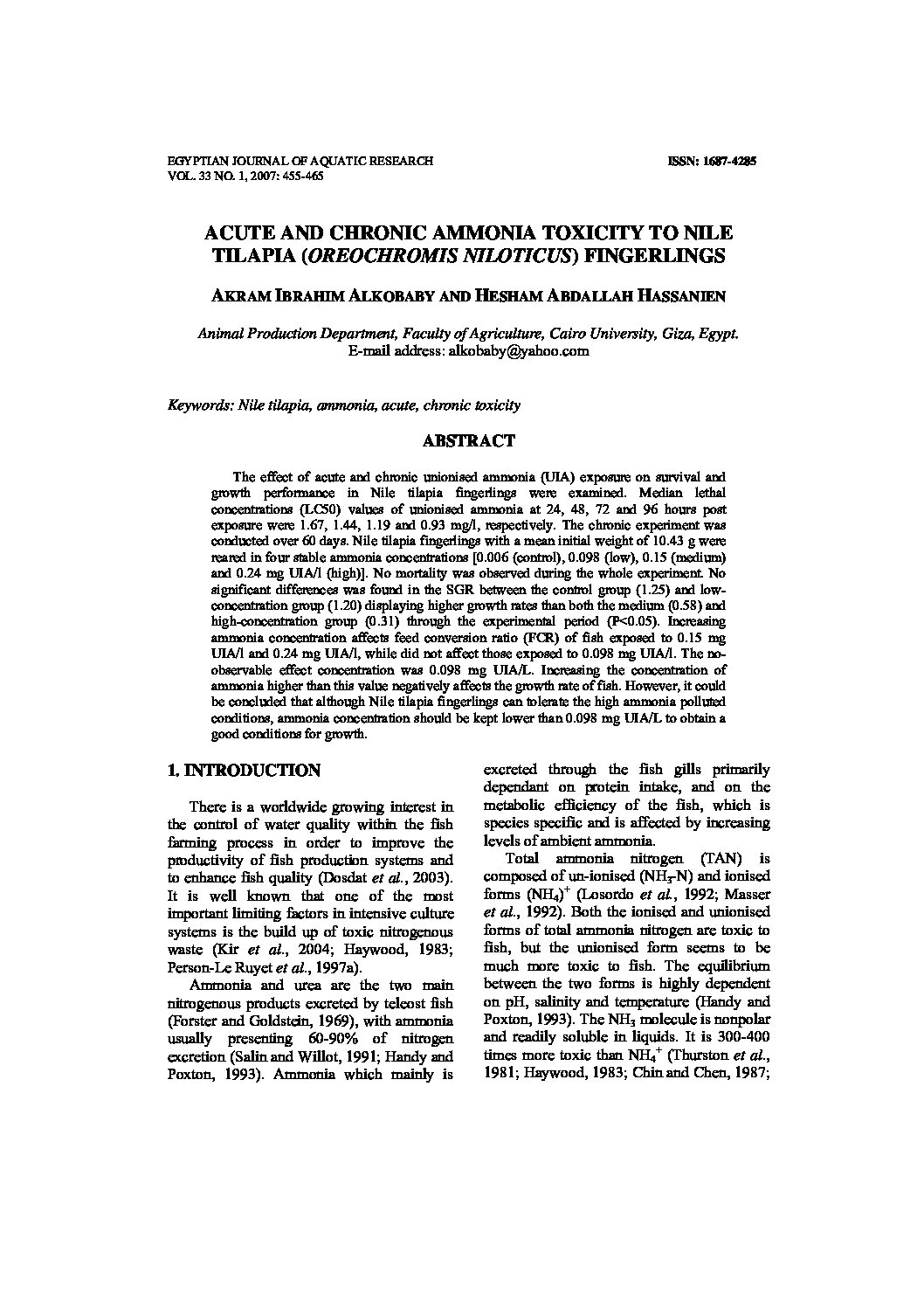Categories
vol-33ENVIRONMENTAL ASSESSMENT ON THE AQABA GULF
COASTAL WATERS; EGYPT
AHMED M. ABDEL-HALIM, ABOEL-KHAIR, E. M, FAHMY M. A,
SHRIDAH M. A.
National Institute of Oceanography and Fisheries, Anfoushy, Alexandria, Egypt.
E-mail: [email protected]
Key words: Aqaba Gulf – Coastal water – nutrient salts – hydrographic parameters – Trophic
state.
ABSTRACT
Environmental Information and Monitoring Programme (EIMP) for the Egyptian
coastal waters of Aqaba Gulf was established to initial monitoring and data base system by
applying quality control assessments in order to evaluate, protect and sustainable use of
coastal regions. Within the framework of this programme six bimonthly field campaigns
were carried out annually during 1998 – 2004. A total of 11 coastal stations were selected
to cover different locations of the Gulf. The surface distribution patterns of hydrographical
parameters (water temperature, salinity, dissolved oxygen and pH) as well as chlorophyll-a,
total suspended matter, transparency, nitrogen and phosphorus forms and reactive silicate
were investigated. The obtained data of seven years work deduced that no thermocline or
thermal pollution, variations in the pH and salinity values were insignificant and the water
was well-oxygenated. The concentrations of nitrogen and phosphorus in the dissolved and
total forms as well as reactive silicate were found quite low. The abundance of inorganic
nitrogen forms were found in the order NH4-N > NO3-N≥ NO2-N reflecting the increasing
rate of NH4-N production than its uptake rate as compared with the other inorganic nitrogen
forms. The study showed that, nitrogen and phosphorus were found in Aqaba Gulf coastal
waters, principally, in organic forms. The low levels of obtained during the present away
for each of Chl-a, TSM, NH4-N, NO3-N, TN, PO4-P and TP signified that Aqaba Gulf
Coastal waters can be classified between oligotrophes to mesotrophic state. Accordingly, it
is safe to conclude that the area of study is not yet seriously threatened, in spite of the rapid
recreational and human developments taken place on its coast during the last ten years.







